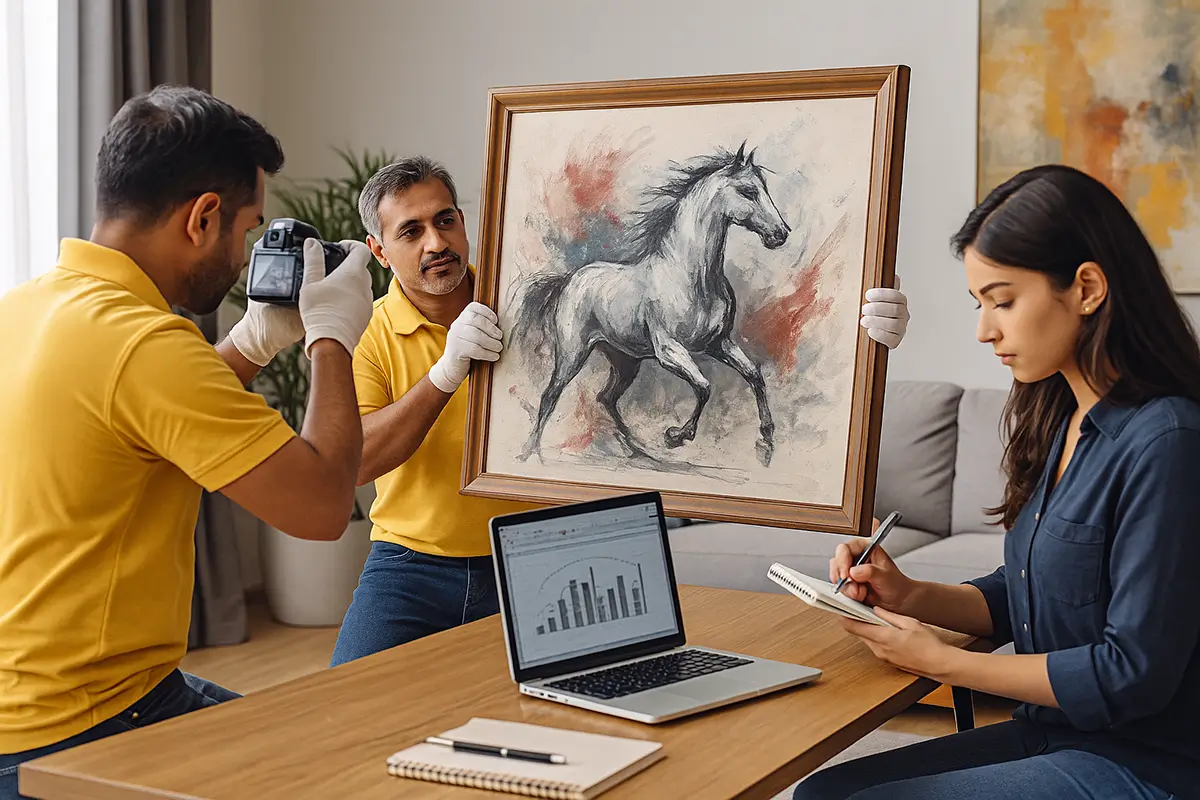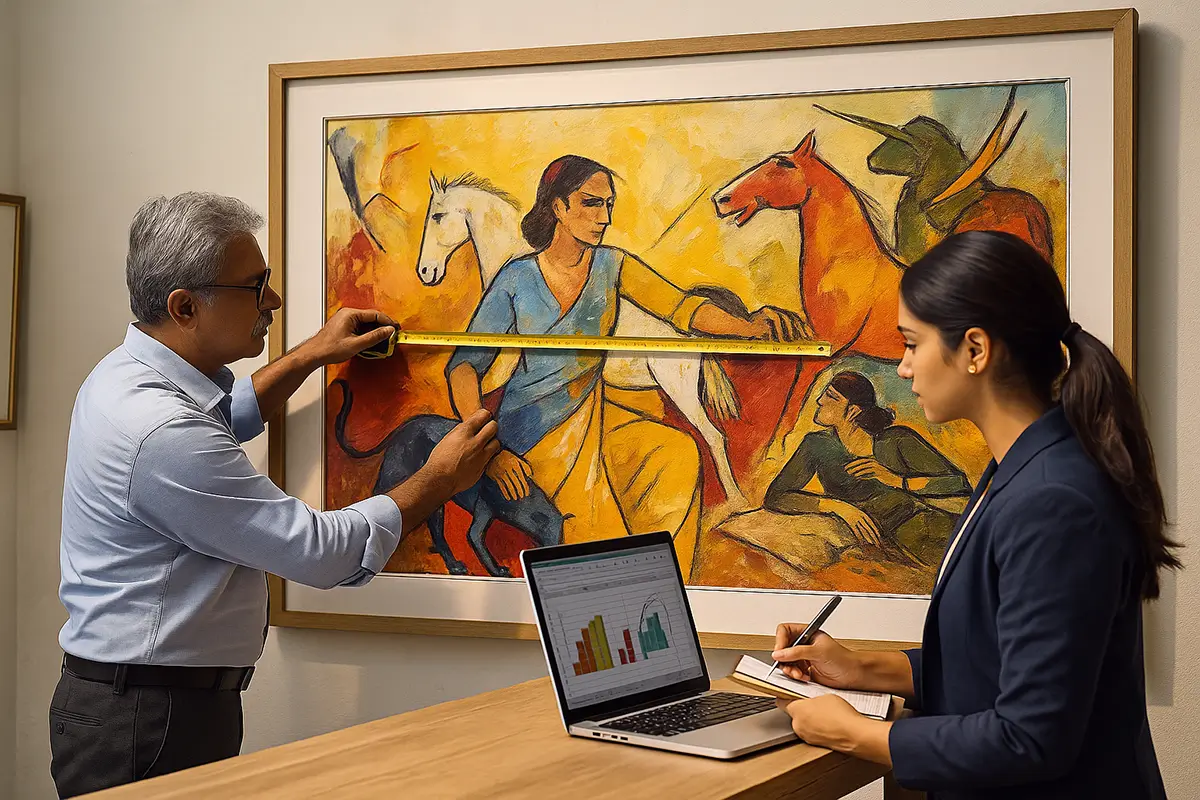As India’s art market matures and collectors become more financially astute, art is increasingly viewed not only as a cultural investment but also as a strategic asset. One area where collectors often lack guidance is the role of art tax planning in India. Given the evolving tax landscape and greater regulatory scrutiny around high-value assets, integrating your art collection into your financial and estate planning is no longer optional—it’s essential.
Whether you’re a seasoned collector, an investor entering the art world, or someone managing inherited artworks, this guide unpacks how you can align your art’s intrinsic value with effective tax strategy, legacy planning, and financial health.
Why Tax Planning for Art Matters
Every piece of art you acquire—be it a contemporary painting, a traditional miniature, or a sculpture—carries potential tax implications. Failure to consider these implications can lead to missed financial opportunities or even liabilities.
Tax planning becomes particularly relevant in the following situations:
- Sale of artwork
- Inheritance or transfer of ownership
- Gifting artworks
- Declaring high-value assets
- Charitable donations
India’s tax system is increasingly focused on transparency, and artworks are considered capital assets. This mandates proper valuation and documentation to avoid penalties and ensure compliance.
Key Tax Scenarios to Consider in India
1. Capital Gains Tax (CGT)
Artworks in India are categorized as capital assets under the Income Tax Act. The sale of an artwork leads to capital gains, which are taxed as follows:
- Long-Term Capital Gains (LTCG): If held for more than 36 months, taxed at 20% with indexation benefits.
- Short-Term Capital Gains (STCG): If held for less than 36 months, added to the individual’s income and taxed as per applicable slabs.
Collectors should document the cost of acquisition, sale proceeds, and associated expenses to calculate gains accurately. The Art Valuation Report becomes vital here to establish fair market value.
2. Wealth and Asset Declaration
If your total assets cross specified thresholds, disclosure of high-value artworks becomes mandatory under Schedule AL in the ITR forms. Non-compliance can invite scrutiny, and under-reporting may attract penalties.
3. Gift Taxation
Gifting artworks—especially when done without financial consideration—can trigger tax liabilities for the recipient if the value exceeds ₹50,000 and if it doesn’t fall under exempt categories like close family members.
4. Estate Planning and Prospective Inheritance Tax
While India currently does not impose inheritance tax, there’s been periodic discussion of its reintroduction. Structuring your collection with future implications in mind is a wise strategy for art estate planning.
The Role of Art Valuation in Tax Strategy
Art valuation is the foundation of compliant and effective tax planning. Whether you are planning to gift, sell, insure, or declare your artworks, having a professionally assessed fair market value of art supported by documentation is non-negotiable.
Key occasions where valuation becomes mandatory:
- Filing capital gains during a sale
- Donating artworks to charity
- Gifting artwork above ₹50,000
- During audits or asset verification by tax authorities
A credible valuation—such as those provided by TurmericEarth’s art valuation services—ensures legal defensibility and optimizes your tax position.
Smart Strategies to Incorporate Art into Tax Planning
1. Annual Portfolio Assessment
Just like with equities or mutual funds, periodic reassessment of your art collection is essential. It allows you to:
- Track market appreciation or depreciation
- Stay aligned with your overall art asset management
- Prepare for year-end tax filing
2. Charitable Donations of Art
Donating artwork to institutions like museums, educational trusts, or art foundations can yield tax benefits under Section 80G. However, the donated piece must be professionally valued, and the donee institution must be registered.
3. Family Trusts and Foundations
For sizable collections, establishing a family trust or an art foundation creates a structured path for ownership and helps reduce direct tax liability. It also ensures continuity of the collection’s legacy across generations.
4. Art Loan Agreements
If you loan artworks to galleries or public institutions, you retain ownership while potentially receiving recognition, goodwill, and in some structured scenarios, deductions against business income.
Pitfalls to Avoid in Art Tax Planning
Many collectors fall into common traps that could lead to penalties or reduced tax benefits:
- Undervaluing artworks to minimize capital gains or declaration thresholds
- Failing to maintain updated valuation certificates
- Gifting without documentation, leading to recipient tax liabilities
- Making sales or transfers without legal consultation, which can trigger unanticipated taxation
Being proactive and detail-oriented ensures you stay compliant while also maximizing financial benefits.
Working with Professionals: The Integrated Approach
Tax planning for art isn’t just about valuation. It involves coordination between tax advisors, legal consultants, and art professionals. A full-spectrum solution like TurmericEarth’s art consultancy services offers:
- Art appraisal for capital gains and asset declaration
- Strategic guidance for art collection divestment
- Integrated reports for art tax planning and estate transfer
- Expert support for art collection documentation and asset protection
This holistic approach ensures that your collection remains compliant, properly valued, and seamlessly integrated with your broader financial strategy.
Future-Proofing with Preventive Strategies
As the Indian art market grows and wealth portfolios diversify, government regulations will continue to evolve. Some recommended forward-looking steps include:
- Digital Documentation of every artwork including valuation, provenance, and transactional history
- Insuring artworks with adequate coverage against loss, theft, or damage (read more about our blog on Art Insurance in India)
- Structuring inheritance through legal wills or family trusts
- Archiving collections for legal, historical, and market relevance
These practices not only assist during tax planning but also contribute to art legacy preservation.
How TurmericEarth Can Help
At TurmericEarth, we offer a full suite of services tailored to serious collectors and institutions. Whether you’re looking for art appraisal services, valuation for charitable donations, or integrating your collection into your estate planning, we ensure every aspect is handled with expertise and precision.
We understand the intricacies of Indian tax laws, and our team is equipped to guide you through every stage—from acquisition to documentation, valuation, and long-term art collection management.
To stay aligned with your financial strategy and remain compliant with India’s tax structure, get your artworks evaluated with our professional art valuation services today.
Conclusion
Integrating art into your tax and financial planning is more than a best practice—it is essential for responsible and sustainable art ownership. As the regulatory and financial frameworks in India evolve, aligning your artistic pursuits with your financial goals ensures both security and legacy.
Whether you’re exploring art investment strategies, declaring assets, or building a legacy, make sure your tax planning is as refined as your art collection. And at every step of the journey, let trusted partners like TurmericEarth guide you.













